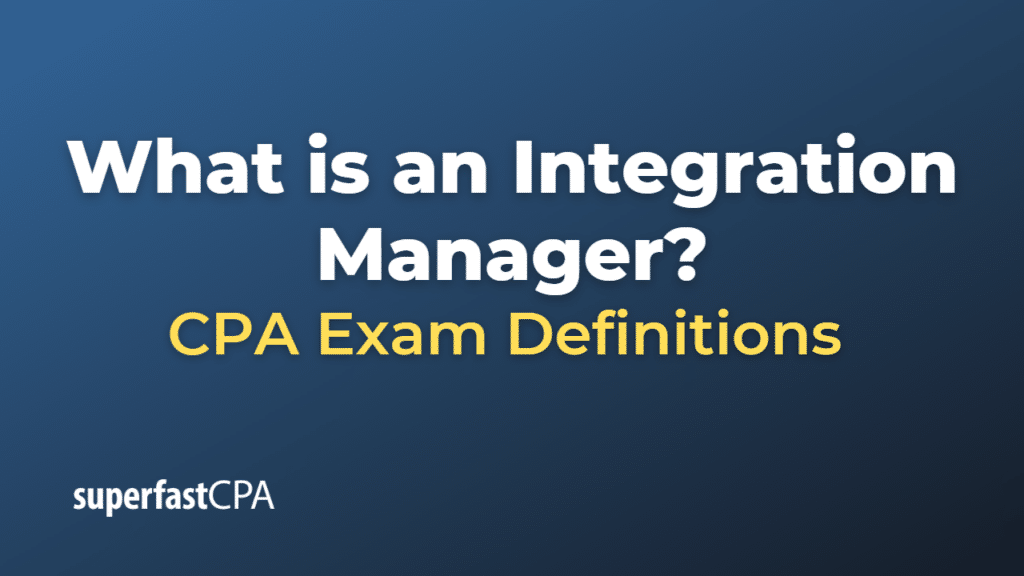Integration Manager
An Integration Manager is a professional responsible for overseeing and managing the process of integration during mergers, acquisitions, or other forms of business consolidation. They act as the central point of coordination and communication in integration efforts, ensuring that all departments work in harmony towards a common goal.
Their main responsibilities often include:
- Project Management: Oversee the entire integration process, establish timelines, and ensure all integration milestones are achieved.
- Communication: Serve as the primary point of contact for all integration-related communication, ensuring all parties are informed and aligned with the integration strategy.
- Strategy Development : Work closely with executive leadership to develop a detailed integration plan that supports the strategic objectives of the merger or acquisition.
- Risk Management: Identify potential risks and obstacles that could impact the integration process, and develop mitigation strategies to address these issues.
- Stakeholder Management: Work with various stakeholders including employees, executives, shareholders, and others to ensure their needs and expectations are addressed throughout the integration process.
- Performance Tracking: Monitor progress against the integration plan, report status to executive leadership, and adjust the plan as needed to address any issues or changes.
An effective Integration Manager needs to have strong leadership and communication skills, along with a deep understanding of business processes and strategy. They also need to be adept at project management, risk management, and stakeholder management. This role can be especially challenging due to the complexity and scale of the integration process, but it is also crucial for ensuring the successful integration of businesses.
Example of an Integration Manager
let’s consider a hypothetical scenario where Company A has just acquired Company B and plans to integrate the two businesses. Company A appoints Jane as their Integration Manager.
- Strategy Development: Jane works with the executive teams of both companies to develop a detailed integration plan. This might involve merging the two companies’ IT systems, aligning their business processes, integrating their sales and marketing teams, and so on.
- Project Management: Jane sets out a clear timeline for these tasks and delegates responsibilities to various team leads. She sets milestones and KPIs for the integration process to ensure that progress can be tracked effectively.
- Communication: Jane holds regular meetings with the integration teams from both companies to track the progress of the integration, address any issues, and ensure everyone is aligned with the plan. She communicates updates to all staff, managing their expectations and reducing uncertainty.
- Risk Management: Jane identifies potential challenges in the integration process, such as cultural clashes between employees of the two companies, and develops strategies to mitigate these. She stays alert to new risks and obstacles that may arise during the integration process.
- Performance Tracking: Throughout the process, Jane monitors the progress of the integration against the established plan. She regularly reports to the executives of Company A on what’s been completed, what’s in progress, and what’s up next. If some parts of the integration are falling behind schedule, Jane identifies the cause and makes the necessary adjustments.
- Stakeholder Management: Jane also liaises with external stakeholders such as customers, suppliers, and regulators to ensure a smooth transition. She addresses any concerns they may have about the merger and reassures them about the benefits of the integration.
In this way, Jane as the Integration Manager ensures that the merger between Company A and Company B is a success. She ensures all teams are working together towards a common goal, and she mitigates any problems that arise during the integration process. She is vital in ensuring that the merger achieves its intended benefits, such as increased efficiency, cost savings, or expanded market share.












